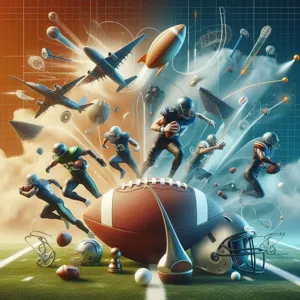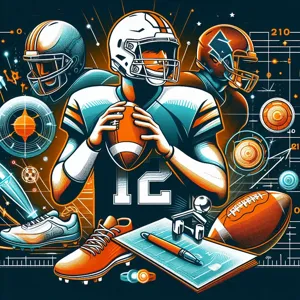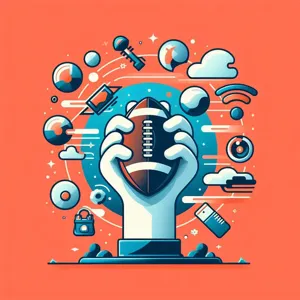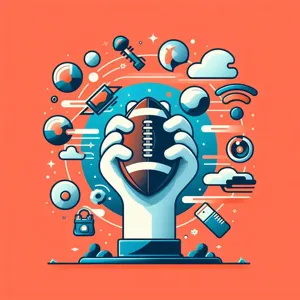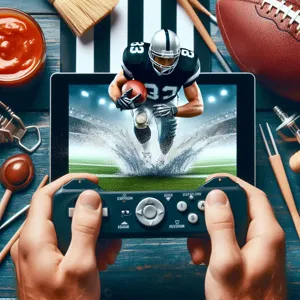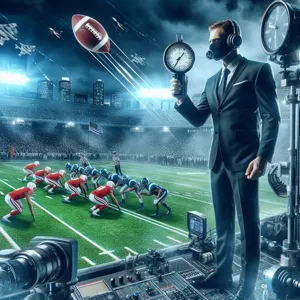Tennis is a sport that demands precision, agility, and mental fortitude.
Whether you’re a seasoned player eyeing a competitive edge or a beginner looking to improve your game, accuracy is the cornerstone of a successful match. Picture this: you’re on the court, the sun is shining, and the crowd’s energy pulses through the air as you prepare to serve. The thrill of hitting the perfect shot is unparalleled, but achieving that level of precision requires practice and strategy. In this blog post, we will explore 10 proven strategies to elevate your tennis accuracy, helping you place every serve, volley, and backhand with confidence. From mastering your grip and footwork to incorporating targeted drills and mental conditioning, these techniques will not only enhance your skills but also deepen your love for the game. So grab your racket and get ready to take your tennis performance to the next level!
1. Understanding the Importance of Accuracy in Tennis
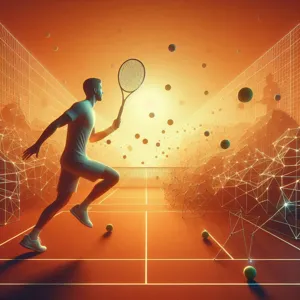
Accuracy in tennis is not just a skill; it’s the cornerstone of successful play. Unlike other sports that might emphasize sheer power or speed, tennis demands precision and finesse. When you step onto the court, every shot counts, and the difference between winning and losing often hinges on how accurately you can place the ball. Whether you’re aiming for a corner of the court or trying to execute a strategic drop shot, knowing where your ball lands is crucial.
Think about it: a perfectly executed serve can set the tone for the entire point, while a well-placed forehand can force your opponent into a defensive position. Conversely, a lack of accuracy can lead to unforced errors, giving your opponent easy points. Each time you miss the target, you not only lose a point but also risk losing confidence in your game. This is why honing your accuracy is paramount—it instills a sense of control and confidence that can elevate your performance.
Moreover, accuracy helps you develop a deeper understanding of your own game. By focusing on where you want the ball to go, you become more attuned to your strengths and weaknesses. It allows you to strategize effectively against your opponents, tailoring your shots based on their positioning and style of play. As you improve your accuracy, you’ll find that you can dictate the pace of the match, making it increasingly difficult for your opponents to anticipate your next move.
In essence, accuracy in tennis is about more than just hitting the ball; it’s about playing with intention and purpose. By committing to enhancing this vital skill, you’ll not only improve your overall game but also enjoy the process of becoming a more strategic and thoughtful player. So, let’s dive deeper into the techniques and drills that will help you sharpen your accuracy on the court and take your tennis game to new heights.
2. Analyzing Your Current Game: Self-Assessment Techniques
To enhance your tennis accuracy, the first step is to conduct a thorough self-assessment of your current game. Understanding your strengths and weaknesses is essential in pinpointing areas that need improvement. This introspective journey can begin on the court and continue off it, providing you with a comprehensive view of your playing style.
Start by recording your practice sessions or matches. Observing your movements, shot selections, and overall performance can reveal patterns that you might not notice in the heat of the moment. Look for recurring errors—are you consistently hitting long on your forehand? Are your serves landing too close to the center line? Identifying these tendencies will help you to focus your training on specific skills.
Additionally, consider using technology to bolster your analysis. Various apps and devices can track your shot accuracy, speed, and spin, giving you quantifiable data to work with. This objective information can be invaluable, as it removes the subjectivity often associated with self-assessment. You might discover that while your serve is powerful, it lacks precision, or that your volleys need more footwork to position you better for accuracy.
Moreover, seek feedback from a coach or a more experienced player. They can provide insights that you might overlook and suggest targeted drills or techniques to improve your accuracy. Remember, self-assessment isn’t just about recognizing what’s wrong; it’s also about celebrating your successes and building on your strengths.
By taking the time to analyze your current game, you empower yourself with the knowledge needed to sharpen your skills and elevate your performance on the court. Embrace this process as a foundation for improvement—after all, the path to accuracy begins with a clear understanding of where you stand.
3. The Role of Footwork in Enhancing Accuracy

Footwork is often the unsung hero of tennis accuracy. While many players focus intently on their swing mechanics and racket positioning, it is the foundation of footwork that truly dictates how effectively you can execute those skills on the court. Proper footwork enables you to position your body optimally, ensuring that you can strike the ball with precision and power.
Imagine standing still while your opponent sends a powerful serve your way. Without swift and agile footwork, you risk being caught off-balance, leading to mishit shots or rushed decisions. Conversely, by mastering footwork drills and incorporating agility exercises into your training routine, you will be better equipped to anticipate the ball’s trajectory and get into the ideal position for each shot.
For instance, practice drills like lateral shuffles, quick steps, and crossover movements can enhance your speed and agility, allowing you to get to the ball faster and set up for your forehand or backhand with a stable stance. Pay attention to your body positioning as well; bending your knees slightly and keeping your weight on the balls of your feet can dramatically improve your ability to pivot and adjust as the play unfolds.
Additionally, incorporating lateral movement drills, such as the “T” drill or cone drills, can simulate match scenarios, helping you to develop the muscle memory needed for quick directional changes. By focusing on your footwork, you’ll not only enhance your accuracy when hitting the ball but also improve your overall court coverage, making you a more formidable opponent. Ultimately, refining your footwork is a crucial strategy that lays the groundwork for sharper, more precise shots that can dominate the game.
4. Developing a Consistent Grip for Better Control
A consistent grip is the unsung hero of accuracy on the tennis court. It may seem like a minor detail, but the way you hold your racket can drastically influence your shot precision and overall performance. Imagine this: during a fast-paced match, you find yourself switching between grips, feeling less control with each swing. This inconsistency can lead to frustrating errors and missed opportunities. To sharpen your accuracy, it’s essential to develop a reliable grip that feels comfortable and natural.
Start by experimenting with different grip styles—Eastern, Western, or Semi-Western—for your forehand and backhand shots. Each grip has its strengths and weaknesses, so take the time to find what works best for your playing style. Practice is key. Spend time hitting against a wall or with a partner, focusing on maintaining the same grip for each shot. As you practice, pay attention to how your grip affects the ball’s trajectory and spin.
Additionally, consider the importance of grip pressure. Too tight, and your shots may become rigid and less fluid; too loose, and you risk losing control of the racket. Aim for a relaxed but firm grip that allows for quick adjustments and a full range of motion. Keep in mind that your grip may need to change slightly depending on the type of shot you’re executing—like transitioning from a groundstroke to a volley—but having a core grip that you rely on will create a strong foundation for your game.
Finally, don’t underestimate the impact of grip size. An incorrect grip size can lead to discomfort and hinder your ability to play your best. Make sure your racket fits your hand perfectly, allowing for optimal control and reducing the risk of injury. By honing in on your grip and making it a consistent part of your technique, you’ll find that your control improves, and with it, your overall accuracy on the court.
5. Mastering Your Serve: Techniques for Precision
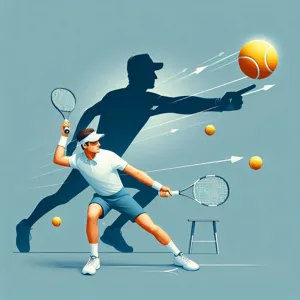
Mastering your serve is not just about power; it’s a delicate dance of precision, control, and technique. The serve is your first opportunity to dictate the pace of the match, making it critical to hone this skill if you want to sharpen your accuracy on the court. Here’s how to elevate your serve from a mere shot to a weapon of precision.
**1. Focus on Your Grip:** Your grip can significantly impact the angle and spin of your serve. Experiment with different grips—like the Continental grip or the Eastern grip—to find one that feels comfortable and allows you to maintain control. A proper grip ensures that the racket meets the ball at the optimal angle, enhancing your accuracy.
**2. Perfect Your Toss:** The toss is the foundation of a great serve. Aim for consistency by developing a fluid tossing motion. Hold the ball between your thumb and index finger, and release it with a gentle flick of your wrist. The ideal toss should be slightly in front of you and at a height that allows you to strike the ball at the highest point of your reach. Practice your toss without hitting the ball to build muscle memory.
**3. Use Your Legs:** A powerful serve begins in your legs. Bend your knees and use your lower body to generate upward momentum as you strike. This not only adds power but also stability to your serve, allowing for better accuracy. Remember, your legs are your strongest asset—engage them fully for a more controlled and precise serve.
**4. Visualize Your Target:** Before you serve, take a moment to visualize the target area on the opposite side of the court. Whether it’s down the line or into the body of your opponent, having a clear mental picture helps to focus your mind and body on hitting that specific spot. As you serve, keep your eyes locked on your target, which can aid in improving your accuracy.
**5. Follow Through:** A complete follow-through is essential for both control and power. After making contact with the ball, allow your racket to continue its path naturally. This ensures that your serve is not only accurate but also fluid and powerful. A proper follow-through helps maintain balance and sets you up for your next shot.
**6. Practice Different Types of Serves:** Incorporate a variety of serves into your practice routine—flat serves, topspin serves, and slice serves. Each type requires different techniques and angles, which can enhance your overall serve accuracy. By mastering these variations, you’ll keep your opponents guessing and increase your chances of hitting your target consistently.
By focusing on these essential techniques, you’ll not only improve your serve but also enhance your overall game. A well-executed serve can set the tone for the entire match, giving you the upper hand and making your accuracy on the court a formidable asset. Remember, mastering your serve takes practice and patience, so stay committed and watch as your precision sharpens with every match.
6. Practicing Targeted Drills for Improved Shot Placement
Practicing targeted drills for improved shot placement is essential for developing precision on the court. While hitting the ball back and forth is a great starting point, incorporating specific drills into your training routine can significantly enhance your accuracy and control. These drills not only focus on where the ball lands but also on the mechanics of your strokes, footwork, and decision-making during play.
One effective drill is the **target practice** exercise. Set up targets—these can be cones, hula hoops, or even spots marked with tape—at various points within the service box and baseline. As you rally, aim for these targets, adjusting your shots to ensure accuracy. Start with larger targets to build confidence, then progress to smaller ones as your precision improves. This exercise encourages you to visualize your shots and develop a keen sense of where you want the ball to go, reinforcing muscle memory in the process.
Another valuable drill is the **cross-court and down-the-line challenge**. Position yourself on one side of the court and alternate between hitting cross-court shots and down-the-line shots. This will not only improve your shot placement but also enhance your ability to control angles and distances. You can even introduce a partner who can return your shots, adding a competitive element that simulates a real match scenario.
Incorporating **shadow swings** into your practice is also beneficial. Without a ball, practice your swing mechanics as if you are hitting to a target area. Focus on your foot positioning, follow-through, and the angle of your racket. Visualization plays a crucial role here; imagining the ball’s trajectory will help you internalize the motions needed for successful shot placement.
Lastly, consider utilizing technology to your advantage. Many tennis clubs now offer apps or devices that can track your shot placement and accuracy, providing instant feedback that can highlight areas for improvement. With consistent practice of these targeted drills, you’ll not only refine your accuracy but also build confidence in your shot selection, making you a formidable opponent on the court.
7. Utilizing Visualization Techniques to Enhance Focus

Visualization techniques have long been celebrated as a powerful tool in the arsenal of elite athletes, and tennis is no exception. Picture this: before stepping onto the court, you take a moment to close your eyes and visualize yourself in action. You see the ball soaring towards you, your racket poised perfectly, and your body in sync with the rhythm of the game. This mental rehearsal is not just daydreaming; it’s a strategic practice that enhances both focus and accuracy.
Start by creating a detailed mental image of your ideal performance. Envision each stroke—forehand, backhand, serve—executing flawlessly with precision. Imagine the sensation of the racket connecting with the ball, the sound of it slicing through the air, and the satisfaction of watching it land exactly where you intended. This immersive experience engages your mind and body, reinforcing muscle memory and boosting your confidence.
Incorporate visualization into your daily routine, dedicating a few minutes each day to this practice. Whether you’re at home or on the go, find a quiet space to reflect on your game. As you visualize, consider not only technical aspects but also your emotional state during matches—feel the excitement, the focus, and the determination. This holistic approach helps solidify a positive mindset that translates onto the court.
Additionally, consider pairing your visualization with breathing exercises to enhance relaxation and concentration. Deep, rhythmic breaths can help clear your mind of distractions, allowing you to maintain unwavering focus on your mental imagery. By consistently practicing these visualization techniques, you’ll find that your accuracy improves, your on-court decision-making sharpens, and your overall performance elevates, as you transform those mental images into tangible reality during your matches.
8. Incorporating Video Analysis to Evaluate Performance
Incorporating video analysis to evaluate performance is one of the most powerful tools available to tennis players looking to sharpen their accuracy on the court. This innovative technique allows you to gain a deeper understanding of your game by capturing your movements, strokes, and overall performance in real-time. By reviewing footage of your matches and practice sessions, you can identify both strengths and areas for improvement that might not be apparent during play.
Imagine setting up a camera on the sidelines or using a smartphone to film your practice. Once the session is over, you can watch the footage, frame by frame, to analyze your technique. Are you consistently hitting your targets? Is your footwork precise, or are you positioning yourself incorrectly before making a shot? Video analysis enables you to spot these details, providing insight that can be easily missed in the heat of the match.
Moreover, you can compare your performance against professional players by studying their techniques through online videos. This side-by-side evaluation can highlight the nuances of their form, such as how they generate power in their serves or the way they position their bodies for optimal shot placement. By emulating these techniques and integrating them into your practice, you can refine your skills and enhance your accuracy.
To maximize the benefits of video analysis, consider sharing your footage with a coach or trusted training partner. Their fresh perspective can provide constructive feedback and additional insights that you may not have considered. Utilizing video analysis not only fosters a deeper understanding of your gameplay but also instills a sense of accountability, motivating you to focus on the specific aspects of your game that require attention.
Overall, incorporating video analysis into your training routine is a game-changing strategy that can significantly elevate your tennis accuracy, helping you become a more confident and precise player on the court.
9. The Benefits of Mental Toughness and Concentration
Mental toughness and concentration are the unsung heroes of tennis accuracy, often overshadowed by physical prowess and technical skill. However, the true essence of a successful tennis player lies in their ability to maintain focus and exhibit resilience, especially in high-pressure situations.
Imagine standing on the court, the crowd buzzing with anticipation, the match hanging in the balance. This is where mental toughness transforms from a mere concept into a game-changing asset. It’s not just about having the willpower to push through fatigue; it’s about cultivating an unwavering belief in your abilities, allowing you to confront challenges head-on without succumbing to self-doubt.
In practice, this means developing techniques to sharpen your concentration. Visualization is a powerful tool here—before every match, take a few moments to mentally rehearse your shots, envisioning the perfect serve or the ideal backhand down the line. This mental imagery not only reinforces your muscle memory but also instills confidence, preparing your mind for the physical execution.
Furthermore, mindfulness and breathing exercises can help center your thoughts, especially during tense moments in a match. The ability to reset your focus between points—shedding distractions and honing in on your game plan—will significantly enhance your accuracy. When your mind is clear, your body follows suit, allowing for fluid movements and precise shots.
Finally, embrace the idea of embracing failure. Every player will hit the net or miss a critical shot, but it’s how you respond that defines your mental toughness. Use these moments as learning opportunities, analyzing what went wrong and visualizing your success in future scenarios. By fostering a mindset that views challenges as growth opportunities, you will not only improve your accuracy on the court but also cultivate a deeper resilience that will serve you well in every match.
10. How to Use Match Play to Fine-Tune Accuracy
Match play is one of the most effective ways to fine-tune your accuracy on the court. While drills and practice sessions are essential for developing fundamental skills, the dynamic nature of match play introduces real-time pressure and decision-making that cannot be replicated in a sterile practice environment. Here’s how to leverage match play to sharpen your accuracy.
First, focus on specific goals during your matches. Before stepping onto the court, identify a particular aspect of your game that you want to improve—whether it’s your serve placement, your forehand precision, or backhand depth. By narrowing your focus, you can concentrate on executing those shots with accuracy, rather than getting lost in the overall score.
Next, pay attention to your footwork and positioning. Good shot accuracy is often a result of being in the right place at the right time. During match play, make a conscious effort to move into the optimal position for each shot, allowing you to strike the ball cleanly and with control. This is an opportunity to practice your footwork under pressure, where the stakes feel higher and every point counts.
Additionally, analyze your opponent’s tendencies. Observe their shot patterns and positioning. This will not only enhance your tactical awareness but also allow you to anticipate and adjust your shots with greater accuracy. By understanding where your opponent tends to place their shots, you can position yourself accordingly and respond with precision.
Finally, don’t shy away from experimenting during match play. While it’s easy to stick to what feels comfortable, challenging yourself to try new shots or strategies can lead to breakthroughs in your accuracy. Whether it’s attempting to hit deeper shots to push your opponent back or practicing angled volleys, match play is the perfect setting to test your limits and discover what works best for you.
Incorporating match play into your training regimen is essential for developing a sharp, accurate game. By setting specific goals, honing your footwork, analyzing your opponent, and experimenting with new shots, you can significantly enhance your accuracy on the court. Remember, every match is a learning opportunity—embrace it, and watch your skills soar.
11. Building a Training Routine: Consistency is Key
Building a training routine is essential for any tennis player looking to sharpen their accuracy on the court, and the cornerstone of that routine is consistency. Just like mastering any skill, developing precise shots takes time and regular practice. To start, carve out specific days and times each week dedicated solely to your tennis training. Treat these sessions like important appointments you can’t miss; this builds a habit that will help you stay committed.
When crafting your routine, balance is key. Incorporate various drills that focus on different aspects of your game. Spend time honing your serve, working on groundstrokes, and practicing volleys. But don’t forget about footwork; agility drills are just as crucial for positioning yourself accurately for each shot. Consistent practice not only improves your muscle memory but also boosts your confidence during matches.
Additionally, consider setting short- and long-term goals within your training regimen. Short-term goals could be focusing on hitting a certain number of accurate serves in a row, while long-term goals might include improving your overall accuracy percentage in matches. Tracking your progress will help you stay motivated and adjust your routine as needed.
Lastly, remember to incorporate rest days into your schedule. Recovery is just as important as practice when it comes to improving your game. Overtraining can lead to fatigue or injury, which will hinder your ability to maintain your routine. With a well-structured training routine grounded in consistency, you’ll find yourself stepping onto the court with sharper precision and newfound confidence. Embrace the journey, and watch your accuracy soar!
12. Seeking Feedback: Working with Coaches and Peers
Seeking feedback is a critical yet often overlooked component of improving your tennis accuracy on the court. Whether you’re a budding beginner or an advanced player, the insights gained from coaches and peers can provide you with a fresh perspective on your technique and performance.
Working with a coach can significantly enhance your understanding of your strengths and areas for improvement. A skilled coach doesn’t just tell you what to do; they observe your strokes, footwork, and overall strategy, offering tailored advice that can make all the difference. They can identify subtle flaws in your form that you might not even be aware of and provide drills specifically designed to target those issues. For instance, if you struggle with your forehand accuracy, your coach might suggest targeted exercises that focus on your grip and follow-through, allowing you to refine your shot and hit with greater precision.
But don’t underestimate the value of feedback from your peers. Playing with others can offer insights that a coach might miss, especially in friendly matches where the atmosphere encourages open discussion. Your practice partners can share their observations on your shot placement, consistency, and court positioning, helping you to develop a more rounded game. Constructive criticism from fellow players can often lead to breakthroughs in your performance and can enhance your tactical understanding of the game.
Additionally, consider recording your practice sessions or matches. Watching yourself play can be an eye-opening experience. You may notice patterns in your play, such as recurring errors or successful strategies, which can inform your next steps for improvement. Combining video analysis with feedback from coaches and peers creates a comprehensive approach to developing your accuracy on the court.
In summary, actively seeking feedback from coaches and peers creates a supportive network that fosters growth and improvement. Embrace their insights, put their advice into practice, and watch as your tennis accuracy sharpens, leading to more consistent and confident performances in your next match.
13. The Role of Physical Conditioning in Achieving Accuracy
When it comes to tennis, many players often underestimate the profound impact that physical conditioning has on their accuracy on the court. While technical skills and mental focus are crucial, the foundation of consistent and precise shots lies in your physical fitness. A well-conditioned athlete possesses superior strength, agility, and endurance—qualities that directly translate to improved performance during matches.
Physical conditioning enhances your ability to execute shots with precision. Strong core muscles provide stability, allowing for better control over your racquet during swings. Improved leg strength enables quicker lateral movements, facilitating more effective positioning for each shot. As you build stamina through conditioning, you’ll find yourself maintaining high levels of focus and energy throughout longer rallies, reducing the likelihood of errors borne from fatigue.
Moreover, agility training plays a pivotal role in developing footwork, which is essential for reaching the ball in optimal positions. Quick, nimble movements not only help you get to the ball faster but also allow you to set up your shots more effectively, leading to greater accuracy. Incorporating exercises that enhance your balance, such as plyometrics and stability drills, can further refine your ability to strike the ball cleanly and consistently.
In essence, dedicating time to your physical conditioning is not merely about building muscle or endurance; it’s about creating a harmonious blend of strength, speed, and agility that supports your technical skills on the court. By investing in your fitness, you equip yourself with the tools necessary to elevate your game, ensuring that each shot is not just powerful but also precisely placed. So, lace up those sneakers and get moving—your accuracy will thank you for it!
14. Staying Positive: The Mindset for Improvement
When it comes to sharpening your tennis accuracy, one of the most crucial yet often overlooked aspects is your mindset. Staying positive can dramatically influence your performance on the court. A positive attitude not only enhances your focus but also builds resilience in the face of challenges. Tennis is as much a mental game as it is physical, and maintaining a constructive outlook can help you navigate the inevitable ups and downs of practice and competition.
Embrace every missed shot or double fault as an opportunity for growth rather than a setback. Instead of dwelling on mistakes, practice self-affirmation: remind yourself of your strengths, recall successful moments in your game, and visualize the improvements you wish to achieve. This approach fosters a growth mindset, allowing you to see challenges as stepping stones rather than barriers.
Visualization techniques can also play a pivotal role in maintaining a positive mindset. Before stepping onto the court, take a moment to close your eyes and imagine yourself executing perfect serves, hitting precise forehands, and moving fluidly across the baseline. This mental rehearsal not only boosts your confidence but also prepares your mind to react positively during actual play.
Furthermore, surround yourself with supportive teammates and coaches who uplift your spirits. Engaging in positive dialogues during practice can create an encouraging atmosphere that enhances overall performance. By cultivating a mindset focused on improvement and positivity, you’ll not only sharpen your accuracy but also deepen your love for the game—making each practice session a rewarding experience. Remember, in tennis, as in life, a positive outlook can make all the difference!
15. Conclusion: Putting It All Together for Success on the Court
In conclusion, sharpening your tennis accuracy requires a multifaceted approach that combines technique, mental focus, and consistent practice. By integrating the strategies outlined in this guide, you can transform your performance on the court and elevate your game to new heights.
Start by emphasizing the fundamentals—developing a solid grip, mastering your footwork, and perfecting your swing mechanics. Remember that consistency in practice is key; dedicating time to drills that reinforce these skills will build muscle memory and enhance your overall accuracy. Utilize visualization techniques to mentally rehearse your shots, allowing you to approach each point with confidence and clarity.
Moreover, don’t underestimate the power of strategy in your game. Analyzing your opponent’s weaknesses and adjusting your shots accordingly can be the difference between winning and losing. Experiment with aiming for different target areas, such as the corners of the court or deep shots to push your opponent back, which can create more opportunities for success.
Lastly, cultivate a positive mindset. Tennis is as much a mental game as it is a physical one. Focus on maintaining your composure during matches, and practice mindfulness techniques to hone your concentration. With persistence and the right attitude, you will see tangible improvements in your accuracy.
By putting all these elements together, you’ll not only become a more accurate player but also a more strategic and confident competitor on the court. Embrace the journey, keep refining your skills, and watch as your hard work translates into greater success in every match you play. With dedication and the application of these proven strategies, the path to excellence in tennis is firmly within your reach.
In conclusion, honing your tennis accuracy is a journey that combines practice, technique, and mental fortitude. By implementing the 10 proven strategies we’ve outlined, from refining your grip to mastering your footwork and focusing on your target, you’ll not only enhance your precision but also elevate your overall game. Remember, consistency is key; the more you integrate these techniques into your practice sessions, the more natural they will become during matches. So, grab your racket, hit the court, and embrace the process of improvement. With dedication and perseverance, you’ll soon find yourself not just aiming for the lines but confidently landing your shots where you intend. Happy playing!

